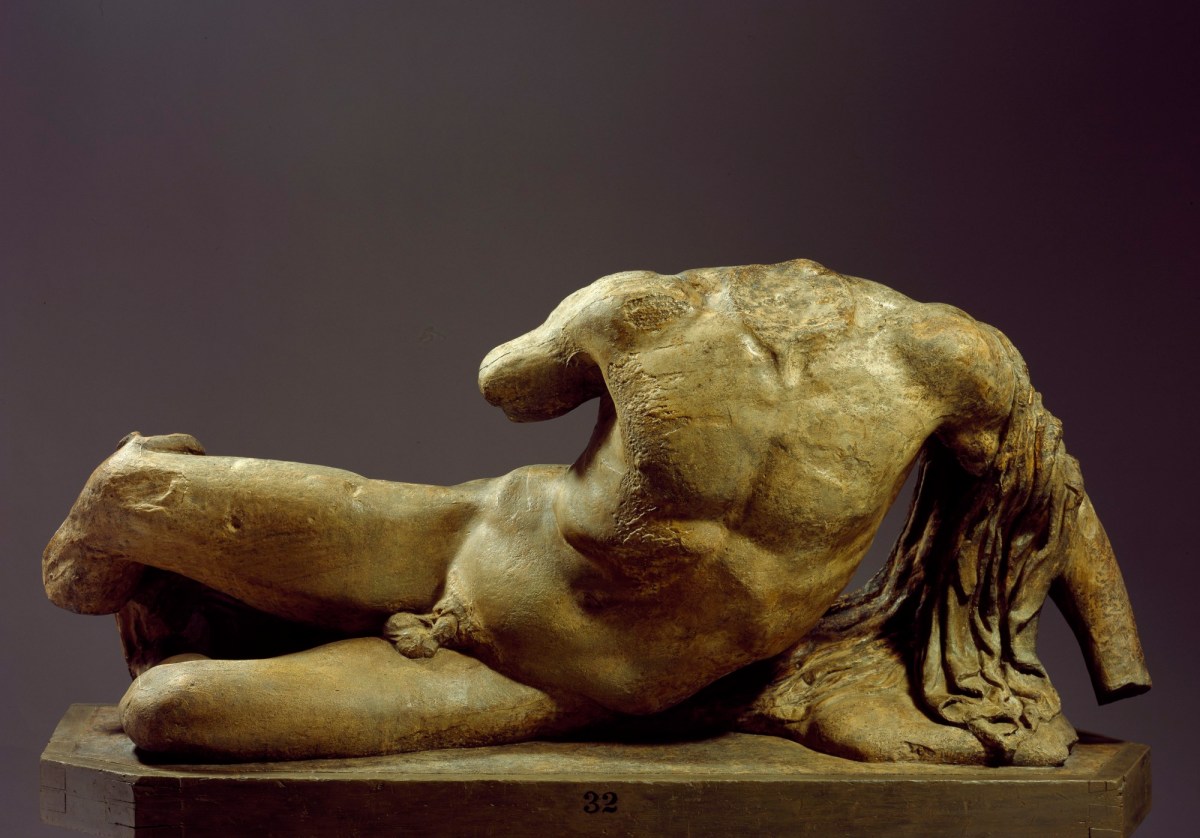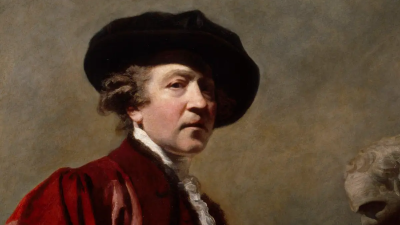
Phidias, Cast of Figure A (Ilissos?) from west pediment of Parthenon, ?1816.
Plaster cast. 920 mm x 1940 mm x 735 mm. © Photo: Royal Academy of Arts, London. Photographer: Paul Highnam.
This image is not available to download. To licence this image for commercial purposes, contact our Picture Library at picturelibrary@royalacademy.org.uk
Cast of Figure A (Ilissos?) from west pediment of Parthenon, ?1816
Phidias (fl. ca. 465-425 B.C.)
RA Collection: Art
This is a plaster cast of Figure A of the West Pediment of the Parthenon. The statue was brought to England for Lord Elgin and was purchased on behalf of the British Museum in 1816.
Building records from the Parthenon allow us to date the sculpture of the pediments in the 430s BC, and perhaps as specifically as between 433 and 438BC. Pausanias wrote that “those [figures] in the rear [West] pediment represent the contest for land between Athena and Poseidon”, and almost all of the figures remained intact when Jacques Carrey (artist to the French ambassador) drew Figure A in situ in 1674. The identity of this remains uncertain. The Temple of Zeus at Olympia shows figures of river gods at the corners, however, and thus this figure is often supposed to represent either the river Ilissos, Kephisos, or Eridanos.
The Parthenon suffered serious damage in 1687. The structure, then used as a powder magazine by Turks, was shelling by besieging Venetians under the command of General Morosini, causing a large explosion. The following year Morosini then attempted to remove the central sculpture of the West Pediment, which fell and smashed to bits.
Figure A weathered both of these events, remaining in a similar state to that shown in Carrey’s drawing from 1674. The figure was drawn in the 18th century by Richard Dalton (1749) and William Pars (1765), whose drawing shows the left forearm, the right elbow and piece of the forearm, and a little more of the right leg than exists now. Interestingly both Carrey’s and Pars’s drawings suggest that the left hand rested on the edge of the horizontal cornice.
It is unclear whether the statue was still in situ or had already fallen when the figure was removed from the Parthenon. This was instigated by Thomas Bruce, seventh earl of Elgin and ambassador to Turkey, whose private secretary Philip Hunt persuaded the authorities in Athens to permit removal and export of many of the surviving sculptures of the Parthenon. After Elgin fell deeply into debt he sold the ‘Elgin marbles’, as his collection of antiquities was called, in 1816, and they were entrusted to the British Museum. Once installed, they quickly became of great interest to successive generations of artists.
This is one of two casts of Figure A in the RA collection. One of these two casts was probably among the nine casts from the Parthenon given by the Prince Regent to the RA in 1816.
Object details
920 mm x 1940 mm x 735 mm
Start exploring the RA Collection
- Explore art works, paint-smeared palettes, scribbled letters and more...
- Artists and architects have run the RA for 250 years.
Our Collection is a record of them.



